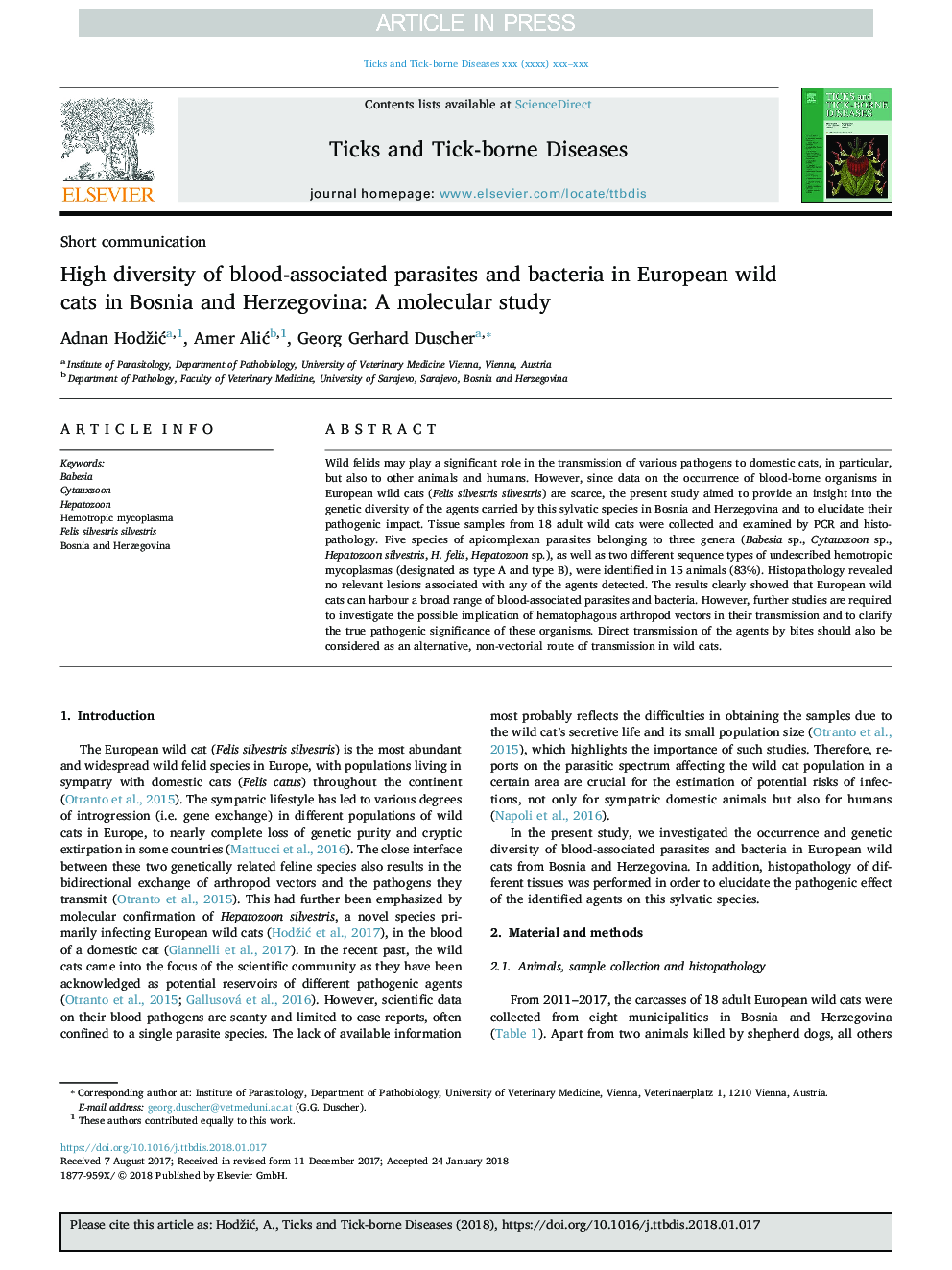| Article ID | Journal | Published Year | Pages | File Type |
|---|---|---|---|---|
| 8507254 | Ticks and Tick-borne Diseases | 2018 | 5 Pages |
Abstract
Wild felids may play a significant role in the transmission of various pathogens to domestic cats, in particular, but also to other animals and humans. However, since data on the occurrence of blood-borne organisms in European wild cats (Felis silvestris silvestris) are scarce, the present study aimed to provide an insight into the genetic diversity of the agents carried by this sylvatic species in Bosnia and Herzegovina and to elucidate their pathogenic impact. Tissue samples from 18 adult wild cats were collected and examined by PCR and histopathology. Five species of apicomplexan parasites belonging to three genera (Babesia sp., Cytauxzoon sp., Hepatozoon silvestris, H. felis, Hepatozoon sp.), as well as two different sequence types of undescribed hemotropic mycoplasmas (designated as type A and type B), were identified in 15 animals (83%). Histopathology revealed no relevant lesions associated with any of the agents detected. The results clearly showed that European wild cats can harbour a broad range of blood-associated parasites and bacteria. However, further studies are required to investigate the possible implication of hematophagous arthropod vectors in their transmission and to clarify the true pathogenic significance of these organisms. Direct transmission of the agents by bites should also be considered as an alternative, non-vectorial route of transmission in wild cats.
Keywords
Related Topics
Life Sciences
Agricultural and Biological Sciences
Animal Science and Zoology
Authors
Adnan HodžiÄ, Amer AliÄ, Georg Gerhard Duscher,
